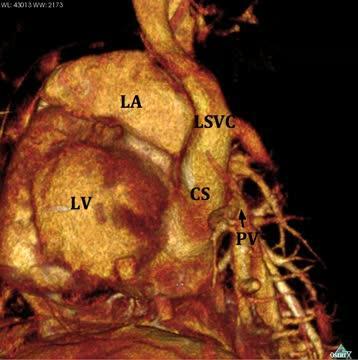Tropical Cyclone Jamala ran into some harsh atmospheric conditions on May 11 in the Southern Indian Ocean and vertical wind shear tore the storm apart. NASA's Aqua satellite captured an image of the remnants while the more powerful, more organized Tropical Cyclone Mahasen continued to strengthen to the north.
Heavens
Today's image of southern Australia showing New South Wales and Victoria shows a series of controlled fires.
Fires are often deliberately set by fire officials and controlled in order to clean out dry underbrush and accumulations of debris. The fire burns away the detritus which could otherwise be the ignition for a devastating bushfire that may easily get out of control.
In this image, it appears all of the fires have been planned and are under control.

New York University physicists have uncovered how energy is released and dispersed in magnetic materials in a process akin to the spread of forest fires, a finding that has the potential to deepen our understanding of self-sustained chemical reactions.
The study, which appears in the journal Physical Review Letters, also included researchers from the University of Barcelona, City College of New York, and the University of Florida. It may be downloaded here: http://bit.ly/18FKwFO.
The first tropical cyclone in the Northern Indian Ocean this season has been getting better organized as seen in NASA satellite imagery. Tropical Cyclone Mahasen is projected to track north through the Bay of Bengal and make landfall later this week.
On May 12, 2013, the sun emitted a significant solar flare, peaking at 10 p.m. EDT. This flare is classified as an X1.7, making it the first X-class flare of 2013. The flare was also associated with another solar phenomenon, called a coronal mass ejection (CME) that can send solar material out into space. This CME was not Earth-directed.

An example of a mouse with TAPVC as seen by microCT. The movie starts off looking from the left side. As the specimen spins you can see the pulmonary veins (PV) connecting to the coronary sinus (CS) from the back. LSVC = left superior vena cava, RSVC = right superior vena cava, LA = left atrium, RA = right atrium, LV = left ventricle.
(Photo Credit: Perelman School of Medicine, University of Pennsylvania; The Children's Hospital of Philadelphia: Nature Medicine)
The Indian Ocean is alive with tropical activity today, May 10, as there's a tropical storm in both the northern and southern oceans. Tropical Cyclone Jamala (formerly 24S) and newborn Tropical Cyclone 01B were both captured on one image from NASA's Terra satellite today.
The so-called Elephant's Tomb in the Roman necropolis of Carmona (Seville, Spain) was not always used for burials. The original structure of the building and a window through which the sun shines directly in the equinoxes suggest that it was a temple of Mithraism, an unofficial religion in the Roman Empire. The position of Taurus and Scorpio during the equinoxes gives force to the theory.
NASA's Hubble Space Telescope has found the building blocks for Earth-sized planets in an unlikely place-- the atmospheres of a pair of burned-out stars called white dwarfs.
These dead stars are located 150 light-years from Earth in a relatively young star cluster, Hyades, in the constellation Taurus. The star cluster is only 625 million years old. The white dwarfs are being polluted by asteroid-like debris falling onto them.
PROVIDENCE, R.I. [Brown University] —Water inside the Moon's mantle came from primitive meteorites, new research finds, the same source thought to have supplied most of the water on Earth. The findings raise new questions about the process that formed the Moon.
The water found on the moon, like that on Earth, came from small meteorites called carbonaceous chondrites in the first 100 million years or so after the solar system formed, researchers from Brown and Case Western Reserve universities and Carnegie Institution of Washington have found.
Evidence discovered within samples of moon dust returned by lunar crews of Apollo 15 and 17 dispels the theory that comets delivered the molecules.
The research is published online in Science Express today.
The stars, known as white dwarfs — small, dim remnants of stars once like the Sun — reside 150 light-years away in the Hyades star cluster, in the constellation of Taurus (The Bull). The cluster is relatively young, at only 625 million years old.
Before rice cultivation became prevalent, ancient populations on the southern coast of China likely relied on sago palms as staple plant foods, according to research published May 8 in the open access journal PLOS ONE by Xiaoyan Yang and colleagues from the Chinese Academy of Sciences in Beijing, China.
In a dark, starless patch of intergalactic space, astronomers have discovered a never-before-seen cluster of hydrogen clouds strewn between two nearby galaxies, Andromeda (M31) and Triangulum (M33). The researchers speculate that these rarefied blobs of gas -- each about as massive as a dwarf galaxy -- condensed out of a vast and as-yet undetected reservoir of hot, ionized gas, which could have accompanied an otherwise invisible band of dark matter.
Most of the chemical elements have their origin in core collapse supernovae. When a star ends its life in a gigantic starburst, it throws most of its mass into space. The radioactive iron isotope Fe-60 is produced almost exclusively in such supernovae. Because its half-life of 2.62 million years is short compared to the age of our solar system, no supernova iron should be present on Earth. Therefore, any discovery of Fe-60 on Earth would indicate a supernova in our cosmic neighborhood.